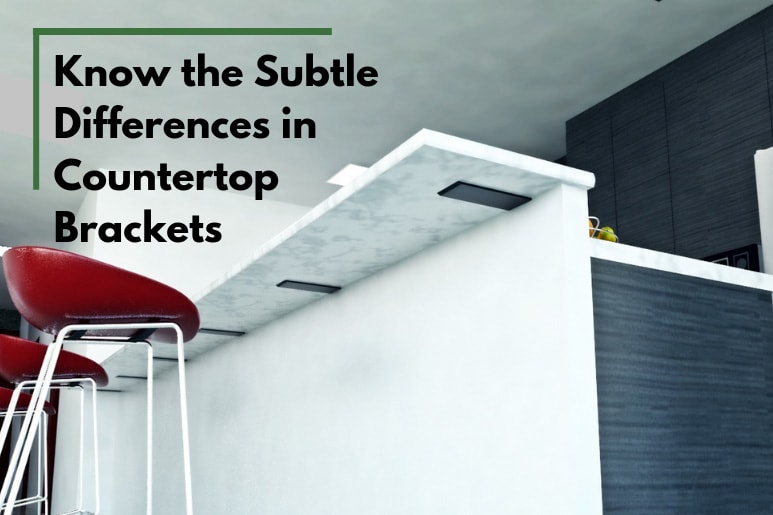
Know the Subtle Differences in Countertop Brackets
Before we get into the differences in countertop brackets, let’s go over a few similarities. All our brackets are made from black powder coated steel in the U.S.A. Every bracket we make is designed to support a lot of weight, so it doesn’t matter if you need to install granite, quartz, or wood—our brackets can carry the weight. All brackets are drilled with counter-sunk holes, so when they’re installed, the screw head will fit flush for a smooth surface. It’s also important to have a quality bracket to support a new granite kitchen countertop for the value of your home. A majority of U.S. homeowners say their biggest investment is their home. They treat it as such with improvements and upgrades.
Countertop brackets have some subtle, but important differences in form and function. Placement of mounting holes, and whether or not there is a bend in the bracket, dictate the way the bracket is used and what kind of weight it can carry. In the end, brackets all do the same job, but a hidden countertop support bracket has a different weight capacity and function than a right-angle bracket.
Center Mount Bracket
The center mount bracket has four counter sunk holes in the center of the bracket. The holes are placed there so the bracket can be mounted directly to the top of a knee wall. Equal lengths of the bracket extend over the knee wall, which gives equal support for the entire counter top. This bracket is best suited for heavy weight granite, quartz, or wood tops.
Top Mount Bracket
Hole placement is what differentiates the top mount from the center mount bracket. The holes on a top mount are all at one end of the bracket, and not directly in the middle. It is designed to support an elevated countertop that has weight extended over one edge, not evenly distributed like a center mount. Think of it this way; if there were no brackets used in the center mount example, chances are, the countertop would stay in place. In the top mount example, it would fall to the floor.
Right-Angle Bracket
Meet the workhorse of the group. The right-angle bracket has exactly that, a 90-degree bend in it to support heavy loads. The center and top mount brackets are flat and easily hidden from view. The right-angle bracket can be hidden, just not as easily.


